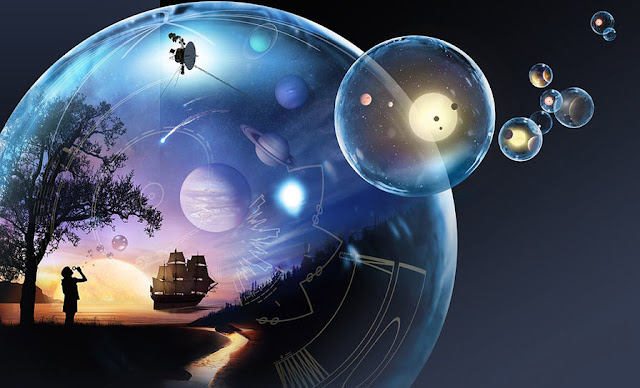Physicists Outline 10 Different Dimensions and How You’d Experience Them
Does string theory excite you? Mathematically, it holds. Aspects about it suggest not one, but several different dimensions, which we are not generally aware of, although we may be interacting with some of them all the time, completely unconscious. If it were true, how would these dimensions look and how could they affect us? And what is a dimension anyway?
Two dimensions is only one point. We can remember the coordinate plane of the math class with the x and y axes. Then there is the third dimension, the depth (the z-axis). Another way to look at it is the latitude, longitude and altitude, which can locate any object on Earth. These are followed by the fourth dimension, space-time. Everything has to happen somewhere and at a certain time. After that, things get weird.
Supercord theory, one of the main theories today to explain the nature of our universe, holds that there are 10 dimensions. That's nine space and one time. Throughout the twentieth century, physicists erected a standard model of physics. It explains very well how subatomic particles behave, together with the forces of the universe, such as electromagnetism, stronger and weaker nuclear forces, and gravity. But that last standard physics can not account.
Even so, this model has allowed us the amazing ability to look back at the moments right after the Big Bang took place. Before that, scientists believe that everything was condensed into a single point of infinite density and temperature, known as the singularity, that exploded, forming everything in today's observable universe. But the problem is that we can not look beyond that point. That's where string theory comes into play. The innovations it provides can account for gravity and help explain what existed before the Big Bang.
So what are these other dimensions and how can we experience them? That is a difficult question, but physicists have some idea of how it could be. Actually, other dimensions are related to other possibilities. The way we interact with them is difficult to explain. In the fifth dimension other possibilities for our world are opened.1
You could move back and forth in time, just as you can in space, as you walk down a corridor. I would also be able to see the similarities and differences between the world we inhabit and other possible ones. In the sixth dimension, it would move not a line but a plane of possibilities and would be able to compare and contrast them. In the fifth and sixth dimensions, no matter where in the space they inhabit, I would witness all possible permutations of what may happen past, present and future.
In the seventh, eighth and ninth dimensions opens up the possibility of opening up other universes, where the physical forces of nature change, places where gravity operates differently and the speed of light is different. As in the fifth and sixth dimension, where all possible permutations in the universe are evident before you, in the seventh dimension each possibility of these other universes, operating under these new laws, becomes evident.
In the higher dimensions, you would simultaneously witness all possible futures of the world, past and present. Flikr.
In the eighth dimension, we reach the plane of all possible histories and futures for each universe, branching into infinity. In the ninth dimension, all the universal laws of physics and conditions in each universe become evident. Finally, in the tenth dimension, we reach the point where everything becomes possible and imaginable.
For string theory to work, six dimensions are required to work in a way that is consistent with nature. Since these other dimensions are on such a small scale, we will need another way to find evidence of their existence. One way would be to look in the past using powerful telescopes that can search for light for billions of years, when the universe was born for the first time.
String theory has an answer to what came before the Big Bang. The universe was composed of nine perfectly symmetrical dimensions, the tenth being the time. Meanwhile, the four fundamental forces joined at extremely high temperatures. The structure was under high pressure. Soon it became unstable and broke in two. This became two different forms of time and led to the three-dimensional universe that we recognize today. Meanwhile, those other six dimensions were reduced to the subatomic level.
As for gravity, string theory holds that the basic units of the universe are infinitesimally small strings, fVibrations of energy. They are so small that they would be measured on the Planck scale, the smallest scale known to physics. Each string vibrates at a specific frequency and represents a certain force. Gravity and all other forces are, therefore, the result of specific string vibrations. One problem is that this s theory is hard to test, outside of advanced mathematical equations. Some experiments have been done using supercomputers, which can run simulations and make predictions. That isn’t exactly enough to prove that it’s true, but it’s helpful and lends support. Besides astronomical observations, physicists are hopeful that experiments with the Large Hadron Collider at CERN, on the Franco-Swiss border, may offer evidence of extra dimensions, lending string theory greater credence.






Comments
Post a Comment